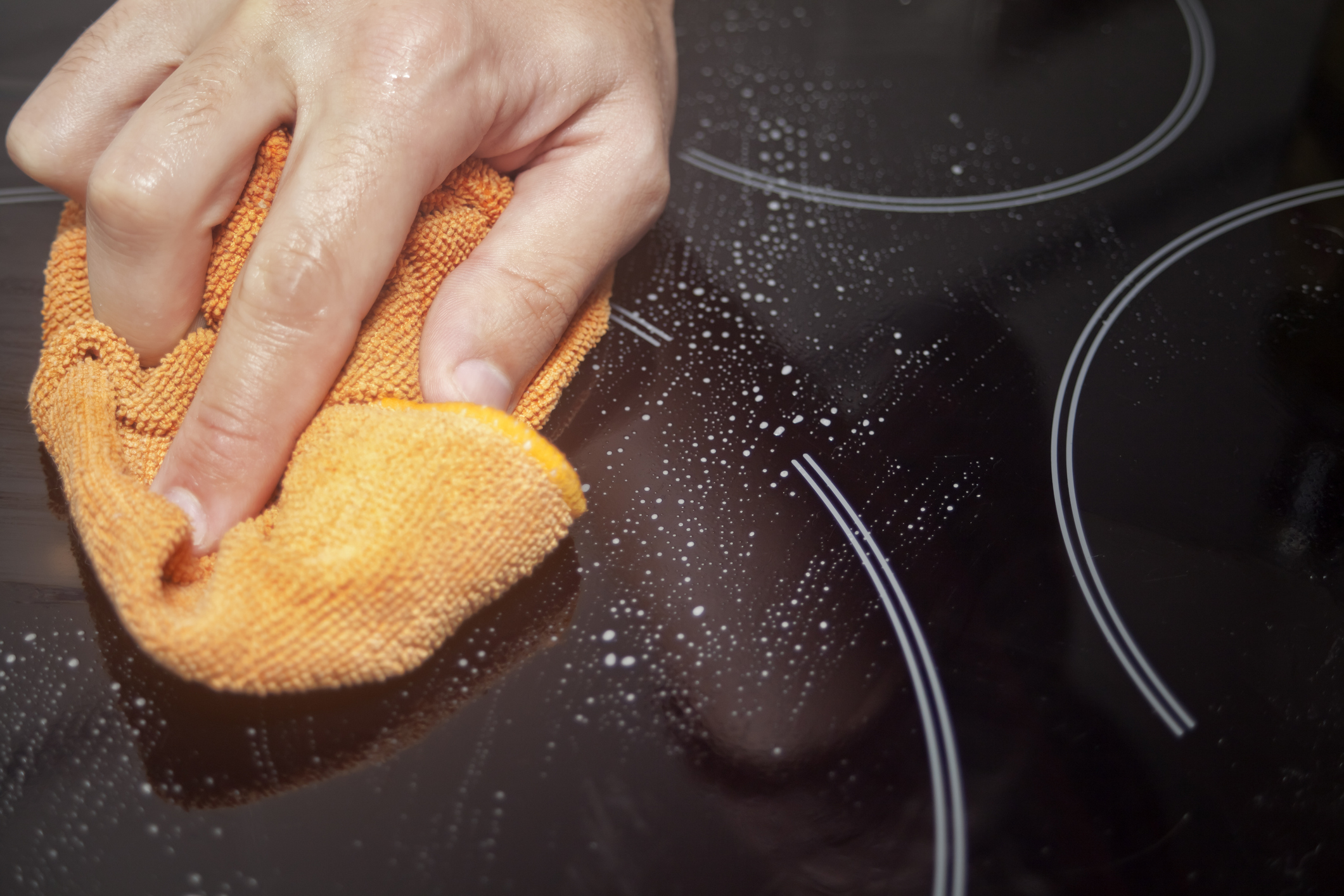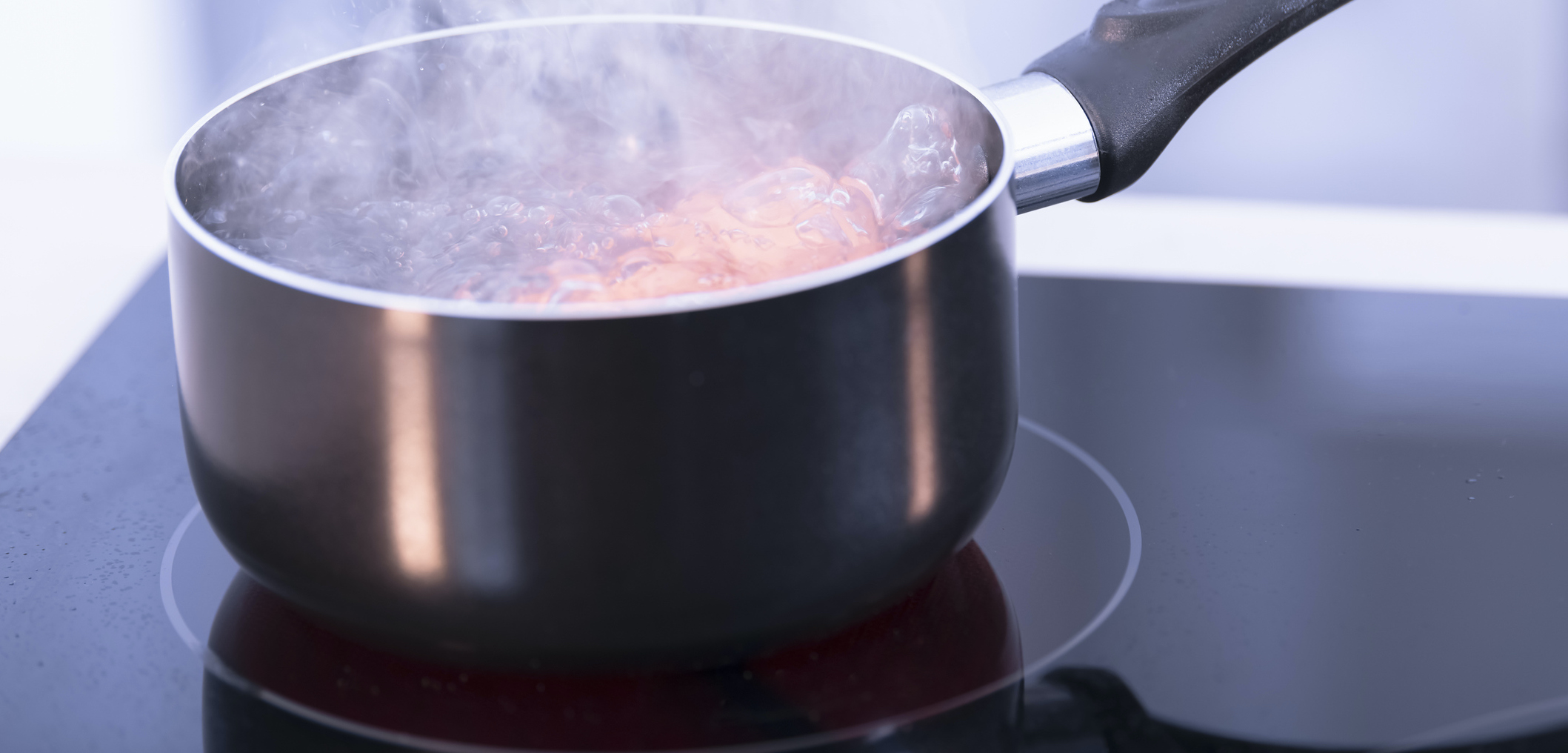As homes evolve to eliminate high carbon fuels like natural gas, induction stoves are becoming a more attractive option. Because they use electricity, induction stoves can take advantage of low carbon energy sources, such as solar and wind. As utilities increase their reliance on these greener energy sources, your home can reduce its carbon footprint by moving to electrical appliances.
The Evolution of Induction Stoves
When induction stove tops were first invented, it was not to create innovation in the world of cooking but instead to show how induction worked. Induction cooking was introduced at the Chicago’s World Fair in 1933, and Frigidaire began demonstrating induction cookers in the mid 1950s. It was then that the potential of induction cooking was recognized and improvements began to be made.
The first induction stove top range was put on display in 1971. These early commercial stoves had problems with reliability, noise, and lack of power, but as time went on, induction cooking became more efficient and accessible. In 2009, Panasonic introduced an entirely induction generated stove top; since then induction cooking has increased in popularity, especially among professional chefs.
How Induction Stoves Work
Induction stoves generate electricity from magnetism. In the induction cooktop, there is a metal coil that is electronically controlled. This coil produces a magnetic field when powered on that excites the atoms in metal cookware, transmitting energy to the cookware, which produces heat. (A video tutorial can be found here.) Unlike gas or electric ranges, induction stoves heat only the cookware they are connected to.
Induction stoves are seen as much safer than gas or traditional electric units because the units themselves don’t heat up. You can touch an induction stove that is powered on without burning yourself as long as there is no metal cookware currently on or recently uptop of the stove. The cool surface also allows for much easier clean-up as you simply wipe down the cool surface after cooking.

How Induction Stoves Compare to Conventional Cooktops
Gas and conventional electric burners heat up both the surrounding air and the cookware, unlike induction ranges, making induction more energy efficient and much faster to use. Because the heat is produced in the cookware itself rather than being created by the stove and transferred to the cookware, it takes much less time and energy to cook.

In fact, nearly all the energy produced by an induction stove (90%) is transferred to the cooked food. By comparison, 74% of the energy from a standard electric stove and 40% of a gas stove are actually used in cooking. Also, induction stoves heat the contents of a pot 25-50% faster than a gas stove top. For example, induction stoves can cut the time it takes water to boil in half.
Induction ranges can bake and broil the same as other electric ovens. They have a wide range of features and related energy usage. Check out this guide for details.
Environmental Advantages
Because induction stove tops are more energy efficient, they may save you money in the long term. Early induction stoves were very expensive but as prices come down, the math can work out in induction’s favor.
Induction stoves or standard electric stoves can be used in any house with less hassle during the installation process. Installing a new gas stove can be very expensive if there is no gas line connected already whereas electric stoves run on whatever electricity source is used in the household.
Also, because induction stoves are electrically powered, if your house is already using a greener and renewable energy source, such as solar panels, the induction stove can be powered by it as well, making it a more environmentally friendly option.
Concerns About Induction Stoves
One thing that many people with induction stoves notice is a clicking or buzzing noise coming from the stove when it is at a higher temperature. This is caused by the different vibrational speeds of the materials in the cookware and is considered normal. Loose handles and pot lids can also add to the noise induction stoves create when powered on. To avoid these noises, simply lower the cooking temperature or try a different kind of cookware as some tend to make more noise than others when heated.
While many are concerned with having to buy new cookware to use on their induction stove, the truth of the matter is that many of the pots and pans in your kitchen will create a magnetic field. It all depends on the amount of iron or steel in the cookware. To test if cookware will work, sticking a magnet to the bottom of the pan can let you know; if the magnet sticks, the cookware should work on the stove. Cast iron cookware is a natural fit with induction cooking. Stainless steel contains nickel which makes it magnetic, but aluminum or copper pans are not magnetic, so they won’t work with induction stoves, nor will glass or ceramic cookware. (To extend the life of your non-magnetic cookware, you can try using inexpensive induction disks made of stainless steel.)
Induction ranges are not only more environmentally friendly due to their energy efficiency, but are also more environmentally friendly because of the lack of air pollution generated from them. Gas stove tops produce indoor air pollution and while any electric stove will give off some particulate matter, it is safer than other types of heated cooking.
Make Your Own Choice
Induction stoves are faster, more environmentally friendly, much easier to clean, and safer in the kitchen. Many restaurants and chefs have switched to induction cooking, but before making the switch, assess your own cooking needs and your budget to decide if it fits your lifestyle. While each cooktop has their own advantages, induction stoves fit into the trend toward more energy efficient homes that rely on low-carbon electricity, which is one reason that induction cooking is becoming increasingly popular as time goes on. If you are looking for ways to improve your cooking, increase your home’s energy efficiency and switch to greener sources of energy, induction stoves could be the right choice for you.
Hannah Bardei contributed this article. Hannah worked as a Sense intern through a program at Minuteman High School in Lexington, Massachusetts.
